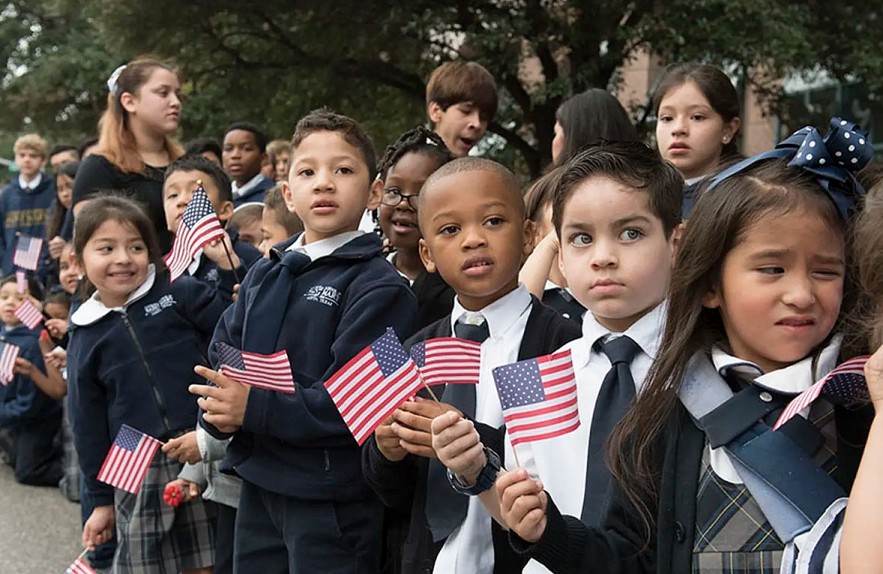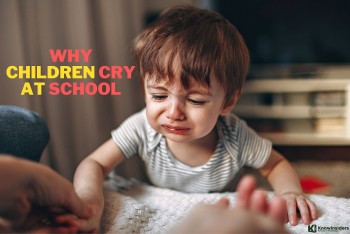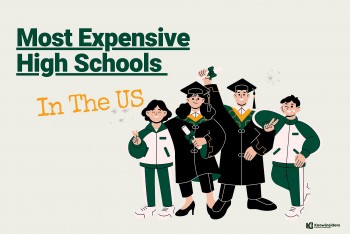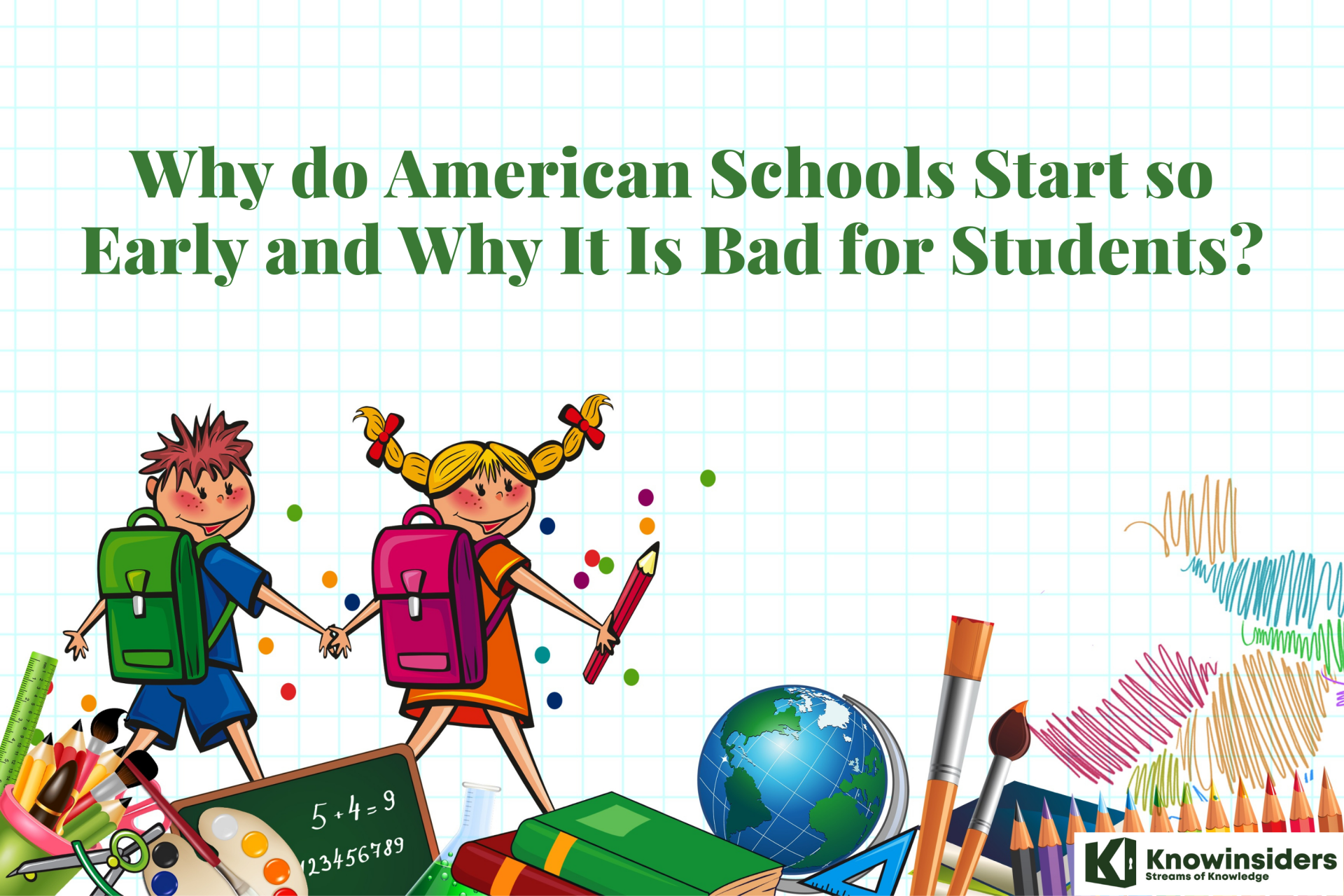School Uniforms in the U.S - Controversy, Pros and Cons
 Top 10 Most Beautiful School Uniforms in The World Top 10 Most Beautiful School Uniforms in The World School uniform is one of the universally popular costumes, exclusively for students at all levels from kindergarten to high school. These top 10 world's most ... |
 |
| School Uniform in the U.S |
Students, parents, and educators have been discussing appropriate school attire for generations. Many schools in the U.S have implemented these policies in an effort to minimize classroom distractions, reduce emphasis on students' socioeconomic disparities, and keep schools safe, even as students have sought out avenues for free expression and individuality through their attire.
Do Schools in the U.S Have Uniforms?
There are nearly 20 percent of public schools in the United States required students to wear a uniform and 44 percent enforced a "strict" dress code, according to the National Center for Education Latest Statistics. Approximately 22 percent of elementary schools, 19 percent of all middle schools, and 10 percent of high schools currently require uniforms, and this trend continues to accelerate.
This is up 8 percent since 2000, where the same statistical survey found just 12 percent of schools in the US required uniforms.
In the United States, only 23% of all schools (public, private, and religious) followed a uniform policy as of the year 2000.
Why Do American Schools Have No Uniform?
The idea behind American schools not making school uniforms compulsory is to restrict comformity and grant students more 'freedom' to express themselves, which grew stronger in the freewheeling 70s and 80s.
As more schools adopt uniform policies, especially in inner cities where students typically come from lower-income families, it appears that American educators are beginning to recognize the advantages of wearing them.
The History of School Uniforms in the U.S
It is thought that the first school to wear a uniform was the Christ Hospital School in London in 1552. The cappa clausa was mandated to be worn in 1222 by the then-Archbishop of Canterbury, marking the beginning of the institutionalized use of a formal academic dress.
In the United States, parochial and private schools first started wearing uniforms in the early 1900s, but public schools didn't start wearing them until the 1980s.
According to ProCon.org, the first schools to adopt uniform policies were in Maryland and Washington, D.C., though they were optional. After the uniform policy was implemented, school officials at the time observed changes in the students' attitudes as well as a decrease in disciplinary issues. Several other schools adopted uniforms as a result.
Why Do U.S Schools Require Uniforms?
 |
| More American schools are implementing school uniforms |
Uniforms are often required because they help schools easily tell who the students are and who belongs at what institution (and helps identify intruders).
However, some schools that don't have uniforms still ensure the safety of their students by requiring students to carry school photo ID cards (9 percent of schools).
U.S School Uniform Policies:
Primary Schools with Uniform Policies: 23%.
Middle Schools with Uniform Policies: 18%.
High Schools with Uniform Policies: 10%.
In lower socioeconomic schools, where more than three-fourths of the student body receives free or reduced lunch, the uniform requirement is also more prevalent.
The percentage of these low-income schools that require uniforms is 47 percent, compared to only about 6 percent of high socioeconomic schools.
Although there are many considerations when a school decides whether or not to require uniforms for its students, the use of uniforms is growing each year.
Administrators view them as helpful in fostering a sense of community and a school culture that fosters seriousness about learning, despite the lack of conclusive evidence that they improve student performance.
Instilling a sense of school pride and lowering bullying are additional benefits.
Having a required school uniform also benefits parents from lower-income families who feel compelled to keep their kids dressed in the most recent trends, which can be expensive.
What is Dress Code in the U.S School?
Most schools in the United States do not require uniforms, but instead enforce a standardized dress code of what types of clothing are appropriate for students to wear to school. Such dress codes vary from school to school, but are normally based on broader policies set by the county's elected school board.
Every school has its own dress code, but most of them follow the general guidelines established by the county's elected school board.
Only private schools (those that charge tuition and formally accept students) and sometimes other types of specialized schools mandate uniforms chosen by the administration.
More public schools, especially in urban areas, have implemented stricter dress codes in the past decade; approximately half of public schools in the United States now have such dress codes.
According to a recent Government Accountability Office (GAO) report, schools with strict dress codes primarily enroll Black and Hispanic students. Students of color are disciplined disproportionately, according to data from the U.S. Department of Education's Office for Civil Rights, and not just for issues with dress code.
Though not all of them are regarded as "strict," the GAO estimated that 93% of school districts have some sort of dress code or policy. More than 90% of those rules forbid wearing clothing that is typically worn by female students, including "halter or strapless tops," "skirts or shorts shorter than mid-thigh," and "yoga pants or any type of skin tight attire," according to the report. However, only 69% of districts were found to be as likely to forbid male students from donning similar attire, such as a "muscle shirt."
While the need for school uniforms decreases as students get older, middle and high schools tend to have stricter dress codes. It would seem that in the absence of school uniforms, dress code regulations are frequently required to ensure appropriate attire:
• Primary Schools with Strict Dress Codes: 43%.
• Middle Schools with Strict Dress Codes: 62%.
• High Schools with Strict Dress Codes: 56%.
Pro and Con: School Uniforms
School uniforms have traditionally been more popular in private and parochial schools, but more and more US public schools are starting to use them too.
Philly (100% of schools), New Orleans (95% of schools), Cleveland (85%), Chicago (80%), Boston (65%), and Miami (60% of schools) are the US cities where school uniforms are worn the most.Also, from 47% in 2000 to 57% in 2010, the number of schools with "strict dress codes" has grown.
PRO:
Wearing school uniforms might make kids safer and less likely to commit crimes.
When kids wear uniforms to school, they can focus on learning instead of what they're wearing.
When students wear uniforms to school, they are all on the same level, which lowers bullying and peer pressure.
Wearing uniforms builds school pride, community spirit, and unity.
Wearing a school uniform might help with behavior and attendance.
Because they are easier to enforce, uniform rules save class time that could be used for other things.
Because of school uniforms, gang colors and symbols can't be shown.
Wearing a school uniform can help you be more punctual because it makes getting ready for school easier.
Uniforms for school can help parents save money.
Most parents and teachers agree that school uniforms should be required.
Even though students have to wear uniforms to school, their legal right to free speech stays the same.
Wearing a uniform makes students look better in the eyes of teachers and other students.
Students can show who they are through their school uniforms by making them unique and adding accessories.
CON
Students' freedom of speech is limited by school uniforms.
Wearing a school uniform encourages conformity over individuality.
Wearing a school uniform may make attacks more violent and not stop bullying.
School uniforms don't make kids more likely to show up to class, do well on tests, or be prepared for school.
The main studies that are used to support the idea that uniforms are helpful are not very solid.
The social and economic differences that school uniforms are meant to get rid of stand out more.
They don't want to wear uniforms to school.
Uniforms might make students feel bad about themselves.
Focusing on uniforms takes attention away from real problems in schools that need real solutions.
The push for school uniforms is more about making money than helping kids learn.
The government shouldn't get in the way of parents picking out clothes for their kids.
Families have to pay more for school uniforms in public schools, which goes against the promise of a free education.
Wearing a school uniform might make becoming an adult take longer.
Conclusion
Even though they are hotly debated, school uniforms can have some advantages for both the students required to wear them and the school. Because of this, many private schools have uniform policies, and more and more public schools are starting to adopt them as well.
According to some reports, school uniforms are becoming more common in the United States, which suggests that more families may discuss the advantages of uniforms in the years to come.
 Why Children Cry When Going To School, Tips To Relieve Them Why Children Cry When Going To School, Tips To Relieve Them Holding parents’ hands to enter school and then bursting into tears after saying goodbye to parents. That’s common among children when going to school. Why ... |
 Why Do I Still Dream of the School Exam and Interpretation Why Do I Still Dream of the School Exam and Interpretation Long after graduation, adults still dream that they are going to school and taking exams. Many see them as school nightmares. |
 Top 20 Best Public High Schools In The US 2023-2024 Top 20 Best Public High Schools In The US 2023-2024 Check out Top 20 Best Public High Schools 2023 In The US. The ranking is based on results of two prestigious websites US News and ... |
 Top 20 Most Expensive U.S High Schools for Rich Family in 2023/2024 Top 20 Most Expensive U.S High Schools for Rich Family in 2023/2024 Education in the US is of top quality in the quality. However, quality comes with quantity. Lots of prestigious high schools in the US have ... |
 Why do American Schools Start so Early and Bad or Good for Students? Why do American Schools Start so Early and Bad or Good for Students? Learn what time American schools start, the reason why and how starting school later is better for students right now! |
























